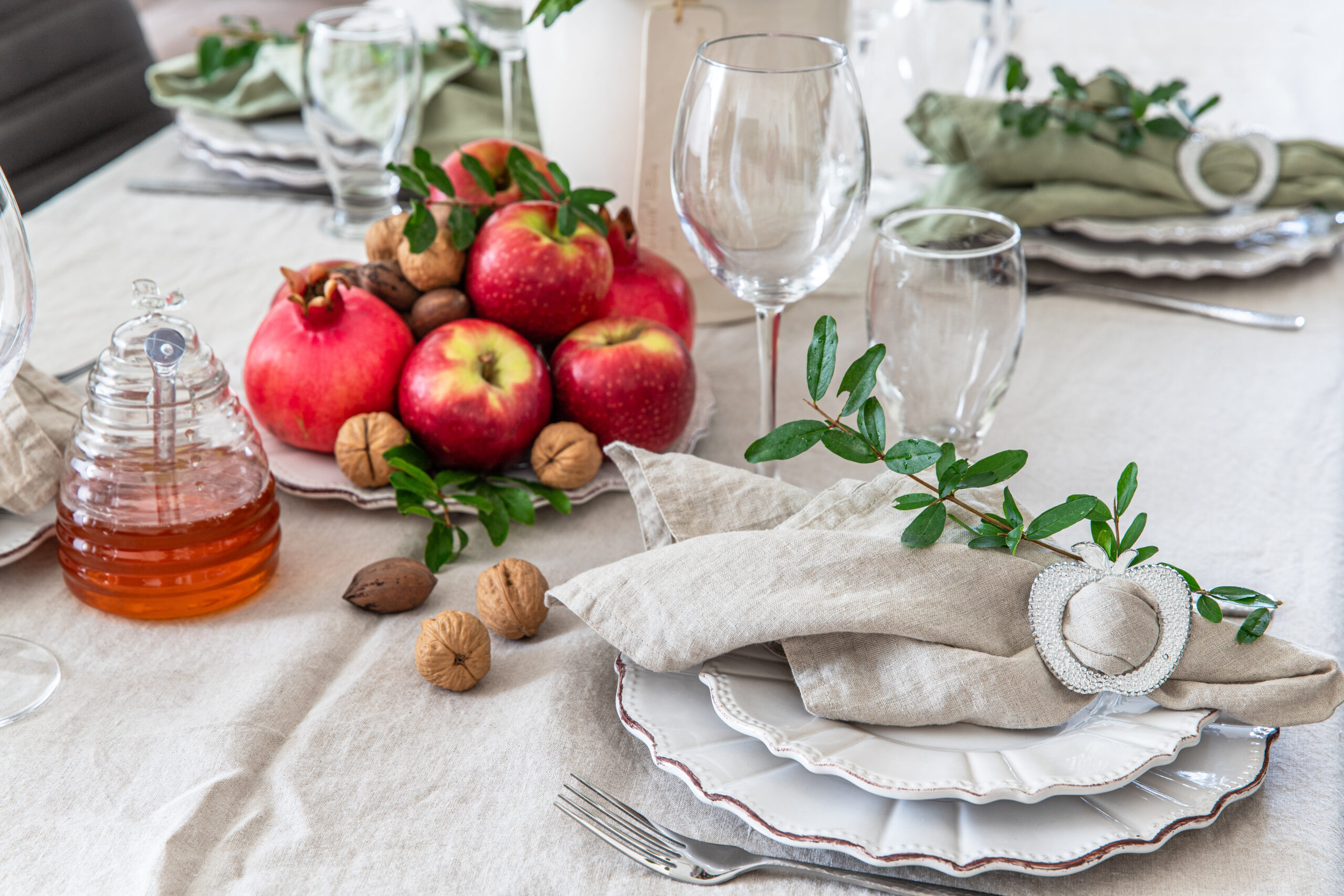
Rosh Hashanah 2024 starts at sundown on Wednesday, October 2nd. Many Jews around the world will be having festive meals with their loved ones, likely including apples and honey, pomegranates, or other traditional good-luck foods.
But that’s not all – Jewish communities all over the world have a plethora of classic and beloved Rosh Hashanah dishes, and we’ve rounded up our 7 favorites here! So upgrade your holiday menu with these tasty and unique recipes for the Jewish New Year from around the world.
Shana Tova and beteavon from all of us at Judaica Webstore!
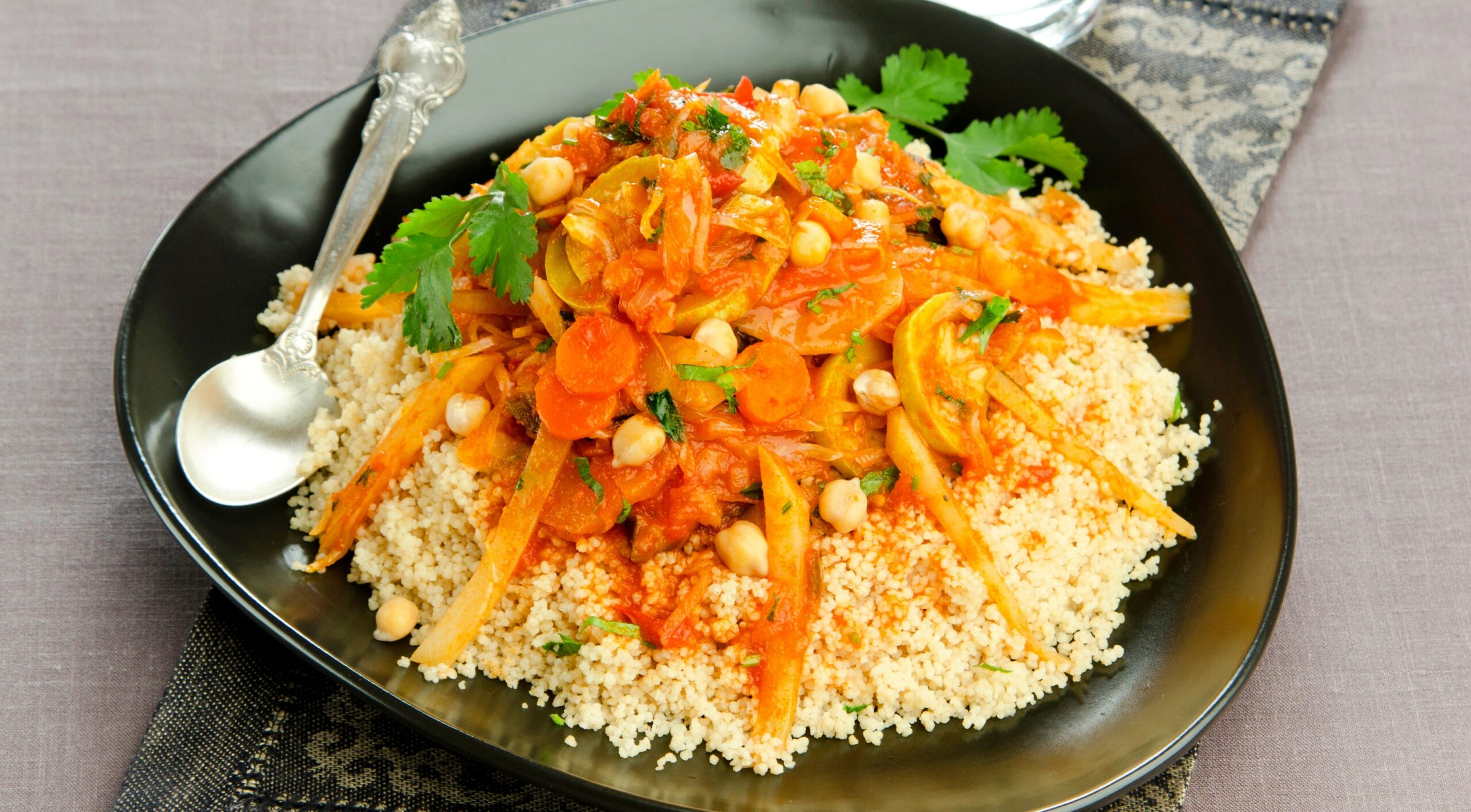
Rosh Hashanah is all about symbolism and wishes for the coming year, and the Jews of North Africa, particularly Morocco, have a traditional dish that is full of holiday meaning: Couscous with Seven Vegetables.
The many tiny grains of the couscous symbolize a wish for countless blessings in the new year, while seven is a lucky number in Judaism. And, two of the vegetables, squash and carrots, represent a wish that God may tear any evil decrees against us, because their Hebrew names resemble the words for “tear” and “decree.”
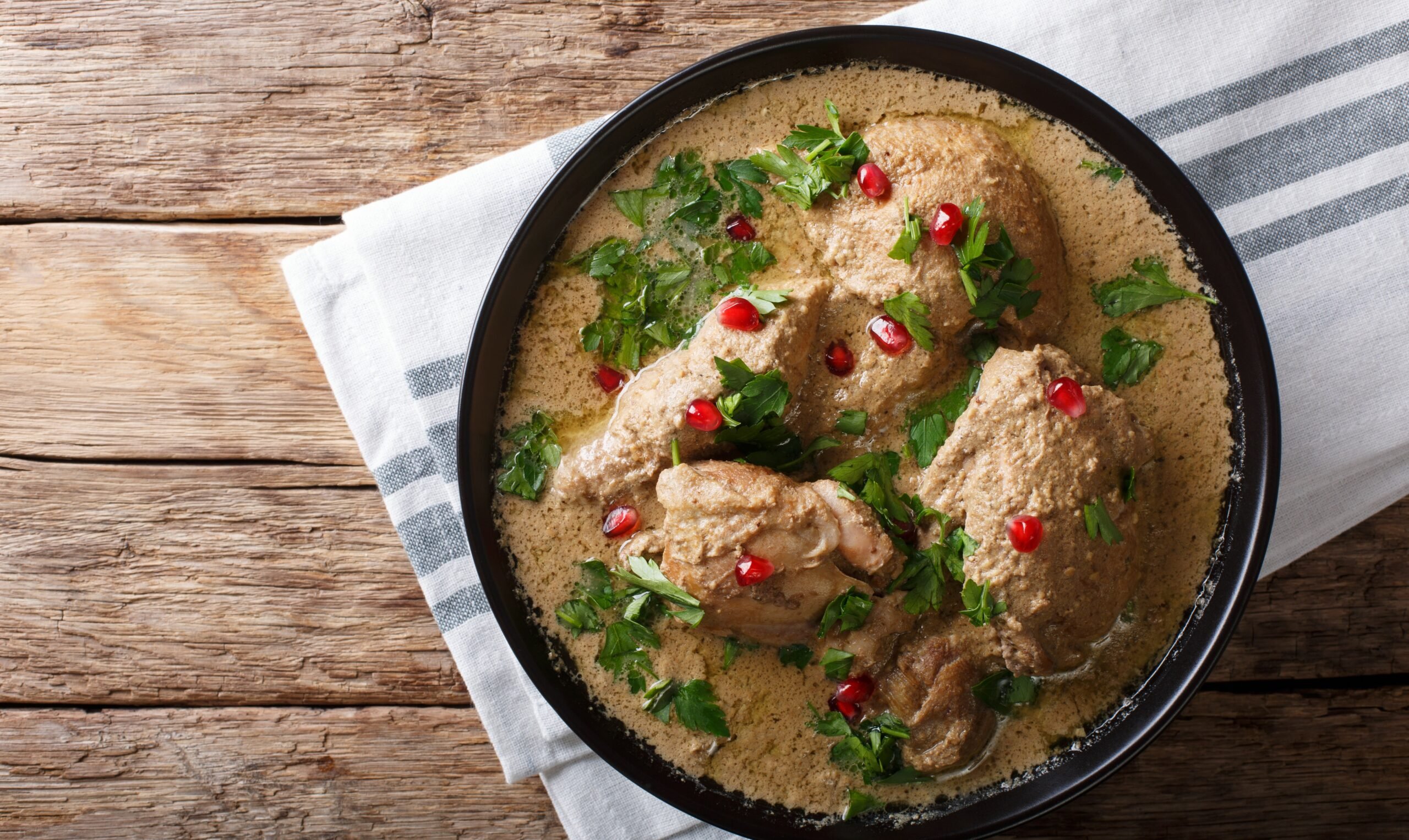
This holiday recipe from the Jewish community of Georgia (the country, not the state) incorporates the famous pomegranate into a festive main dish: chicken cooked in pomegranate juice and garnished with pomegranate seeds.
Pomegranates are traditionally eaten on Rosh Hashanah due to being one of the Biblical Seven Species and because their many seeds represent a wish for an abundance of goodness and blessings in the coming year.
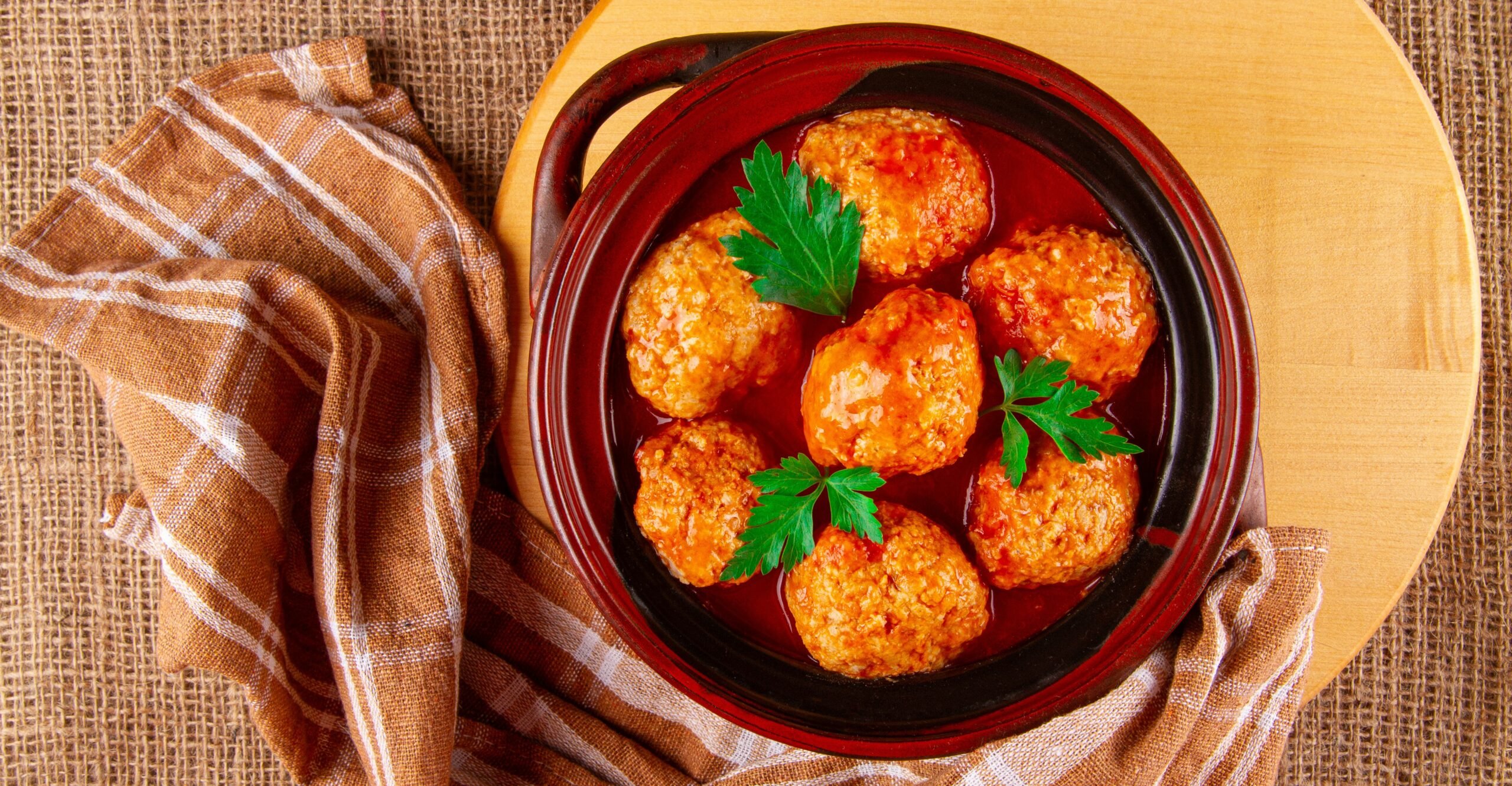
Beets are a traditional Rosh Hashanah good-luck food believed to ward off evil, because their Hebrew name is similar to the one for “depart” or “vanish.” And a wonderful way of incorporating beets into one’s Rosh Hashanah menu is this classic Persian-Jewish recipe for meatballs with a sweet-and-sour sauce that’s made with beets, tamarind, and pomegranate molasses.
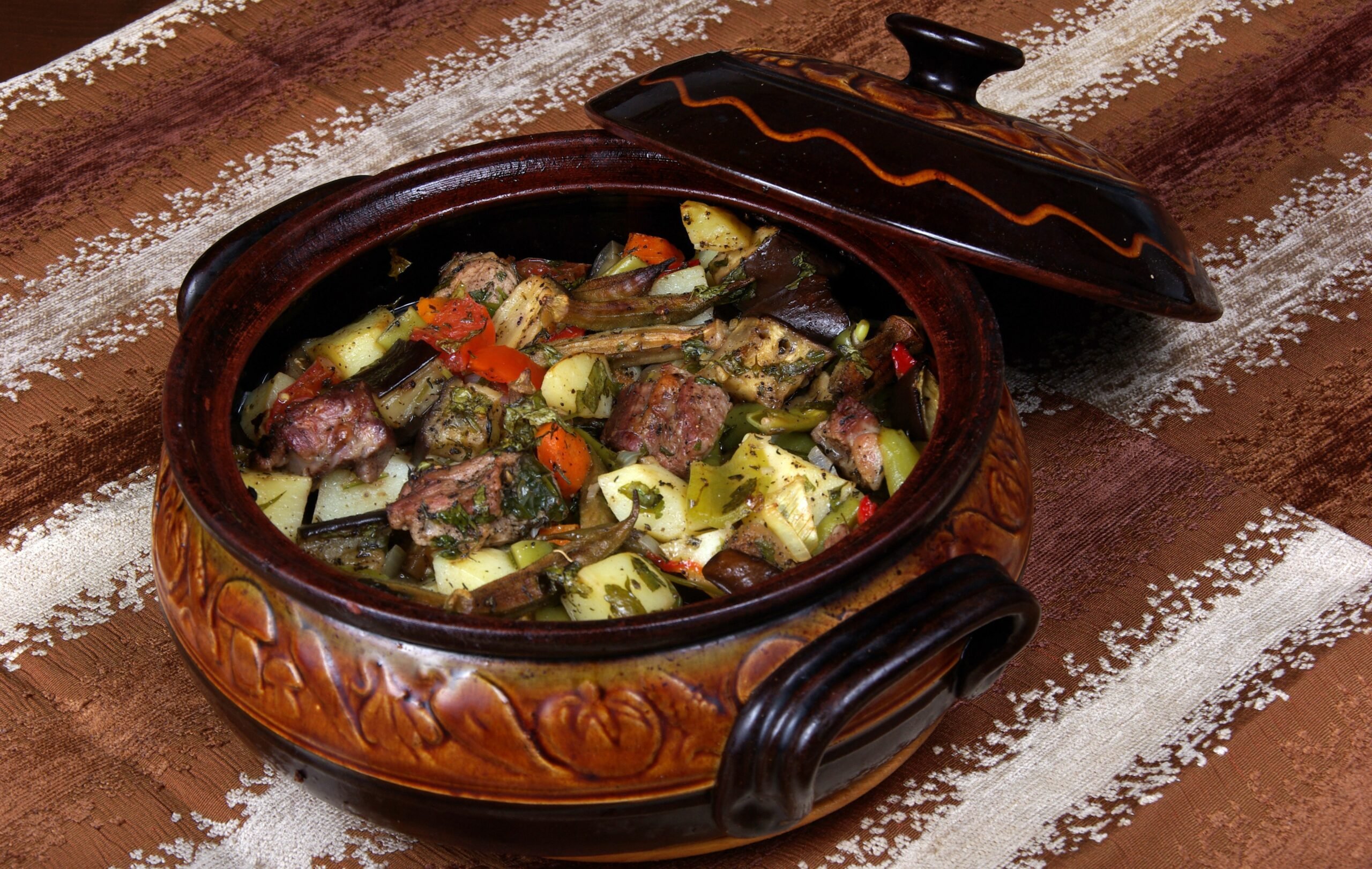
The Jewish community of Bulgaria has given us guvetch, a classic Balkan vegetable stew that’s rich and filling and sure to satisfy vegetarians and carnivores alike. While not exclusively eaten on Rosh Hashanah, the late-summer eggplant and zucchini in this recipe make it a perfect High Holiday dish, and the carrots and green beans are two traditional Rosh Hashanah good-luck foods.
The Indian cities of Bombay and Calcutta were once host to displaced Baghdadi Jews from Iraq, and this community developed a unique cuisine blending Iraqi and Indian flavors that can today still be found among their descendants in Israel and England.
One example of a beloved dish from this tradition is called meetha, meaning “sweet” just like our desire for a sweet new year and customarily eaten on Rosh Hashanah. It's made with carrots, tomato puree, and rich spices.
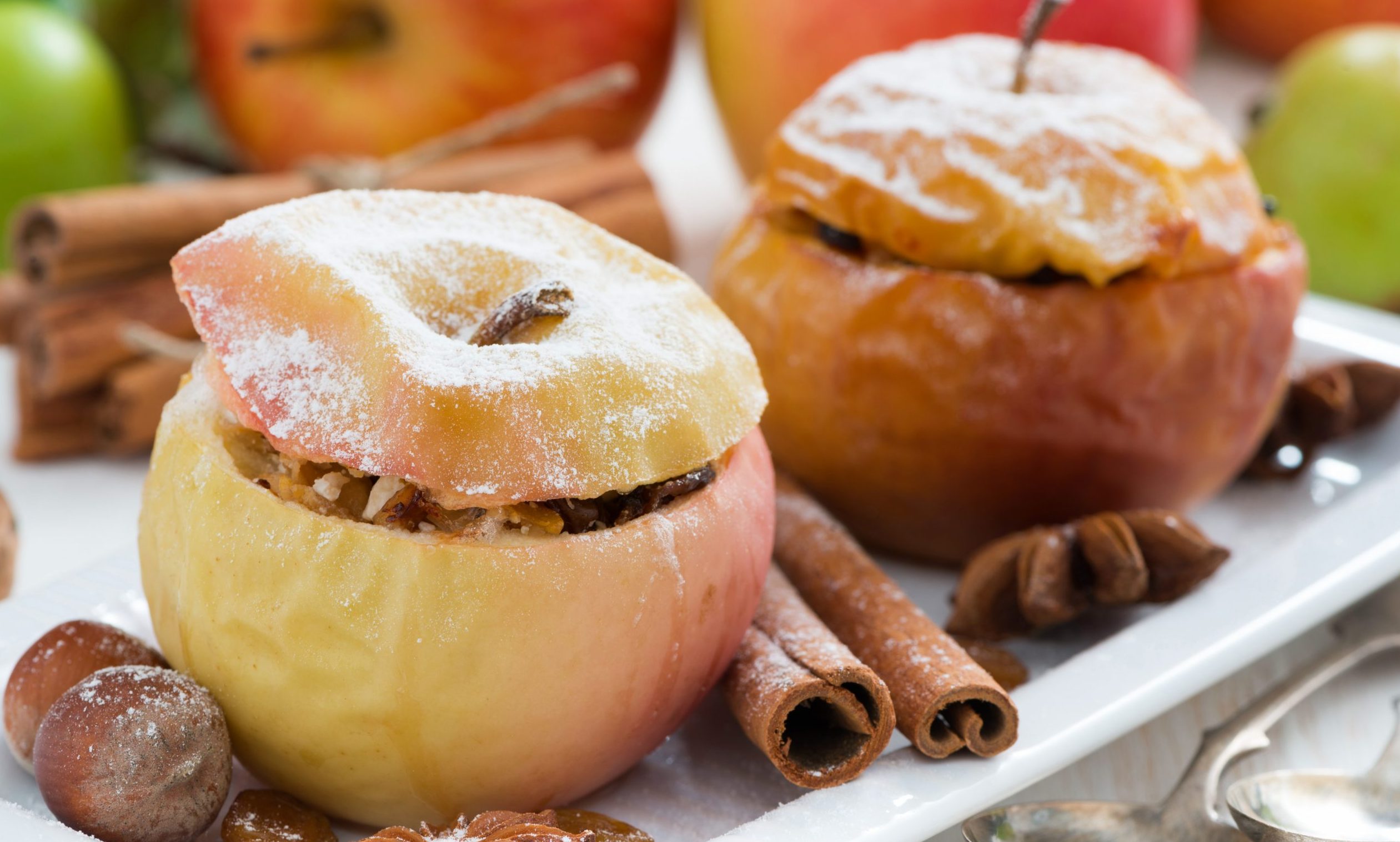
If you hail from an Ashkenazi tradition, you probably associate Rosh Hashanah with apples dipped or drizzled in honey. This late-summer/early-fall fruit is so abundant in Eastern Europe and Russia that it’s become a staple of the Jewish New Year. And one classic way of serving it is as a baked dessert, sweetened with honey of course, such as in this recipe from the Jewish community of Siberia.

While some Jewish communities avoid nuts on Rosh Hashanah, this custom is not universal, and some even end their holiday meal with a nut-based dessert - such as this scrumptious cake from Turkey. Called tispishti, it’s traditionally made with ground walnuts or almonds, and it’s so tasty that your guests won’t even believe it’s protein-rich and gluten-free.
Enjoy, and Happy Rosh Hashanah from the entire Judaica Webstore team in Jerusalem!
Don't forget to get your Jewish tableware from Jerusalem for every holiday and shabbat year-round, and kosher honey and gift baskets for that perfect taste of Israel!


Owned by JWG Ltd, maintains its offices and warehouse in Jerusalem, Israel. © 1999-2022 JWG Judaica and Dead Sea Cosmetics